For literature written by English speakers elsewhere, see American literature; Australian literature; Canadian literature, English; New Zealand literature; and South African literature.
The Tudors and the Elizabethan Age
The beginning of the Tudor dynasty coincided with the first dissemination of printed matter. William Caxtons press was established in 1476, only nine years before the beginning of Henry VIIs reign. Caxtons achievement encouraged writing of all kinds and also influenced the standardization of the English language. The early Tudor period, particularly the reign of Henry VIII, was marked by a break with the Roman Catholic Church and a weakening of feudal ties, which brought about a vast increase in the power of the monarchy.
Stronger political relationships with the Continent were also developed, increasing Englands exposure to Renaissance culture. Humanism became the most important force in English literary and intellectual life, both in its narrow sense-the study and imitation of the Latin classics-and in its broad sense-the affirmation of the secular, in addition to the otherworldly, concerns of people. These forces produced during the reign (1558-1603) of Elizabeth I one of the most fruitful eras in literary history.
The energy of Englands writers matched that of its mariners and merchants. Accounts by men such as Richard Hakluyt, Samuel Purchas, and Sir Walter Raleigh were eagerly read. The activities and literature of the Elizabethans reflected a new nationalism, which expressed itself also in the works of chroniclers (John Stow, Raphael Holinshed, and others), historians, and translators and even in political and religious tracts. A myriad of new genres, themes, and ideas were incorporated into English literature. Italian poetic forms, especially the sonnet, became models for English poets.
Sir Thomas Wyatt was the most successful sonneteer among early Tudor poets, and was, with Henry Howard, earl of Surrey, a seminal influence. Tottels Miscellany (1557) was the first and most popular of many collections of experimental poetry by different, often anonymous, hands. A common goal of these poets was to make English as flexible a poetic instrument as Italian. Among the more prominent of this group were Thomas Churchyard, George Gascoigne, and Edward de Vere, earl of Oxford. An ambitious and influential work was A Mirror for Magistrates (1559), a historical verse narrative by several poets that updated the medieval view of history and the morals to be drawn from it.
The poet who best synthesized the ideas and tendencies of the English Renaissance was Edmund Spenser. His unfinished epic poem The Faerie Queen (1596) is a treasure house of romance, allegory, adventure, Neoplatonic ideas, patriotism, and Protestant morality, all presented in a variety of literary styles. The ideal English Renaissance man was Sir Philip Sidney-scholar, poet, critic, courtier, diplomat, and soldier-who died in battle at the age of 32. His best poetry is contained in the sonnet sequence Astrophel and Stella (1591) and his Defence of Poesie is among the most important works of literary criticism in the tradition.
Many others in a historical era when poetic talents were highly valued, were skilled poets. Important late Tudor sonneteers include Spenser and Shakespeare, Michael Drayton, Samuel Daniel, and Fulke Greville. More versatile even than Sidney was Sir Walter Raleigh-poet, historian, courtier, explorer, and soldier-who wrote strong, spare poetry.
Early Tudor drama owed much to both medieval morality plays and classical models. Ralph Roister Doister (c.1545) by Nicholas Udall and Gammer Gurtons Needle (c.1552) are considered the first English comedies, combining elements of classical Roman comedy with native burlesque. During the late 16th and early 17th cent., drama flourished in England as never before or since. It came of age with the work of the University Wits, whose sophisticated plays set the course of Renaissance drama and paved the way for Shakespeare.
The Wits included John Lyly, famed for the highly artificial and much imitated prose work Euphues (1578); Robert Greene, the first to write romantic comedy; the versatile Thomas Lodge and Thomas Nashe; Thomas Kyd, who popularized neo-Senecan tragedy; and Christopher Marlowe, the greatest dramatist of the group. Focusing on heroes whose very greatness leads to their downfall, Marlowe wrote in blank verse with a rhetorical brilliance and eloquence superbly equal to the demands of high drama. William Shakespeare, of course, fulfilled the promise of the Elizabethan age. His history plays, comedies, and tragedies






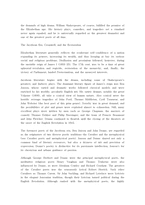
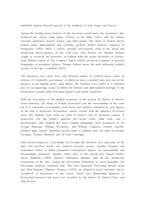

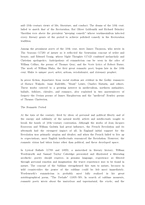

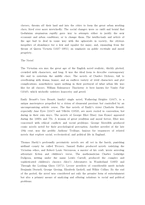
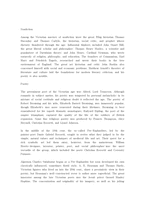

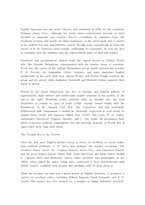
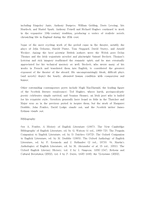
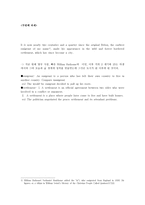
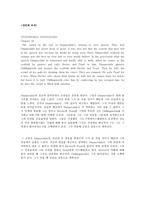

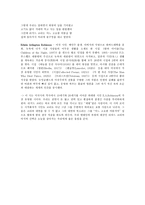
 분야
분야


